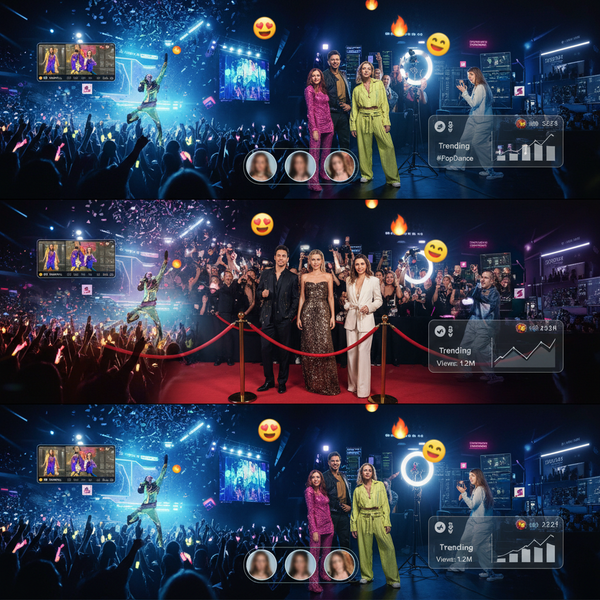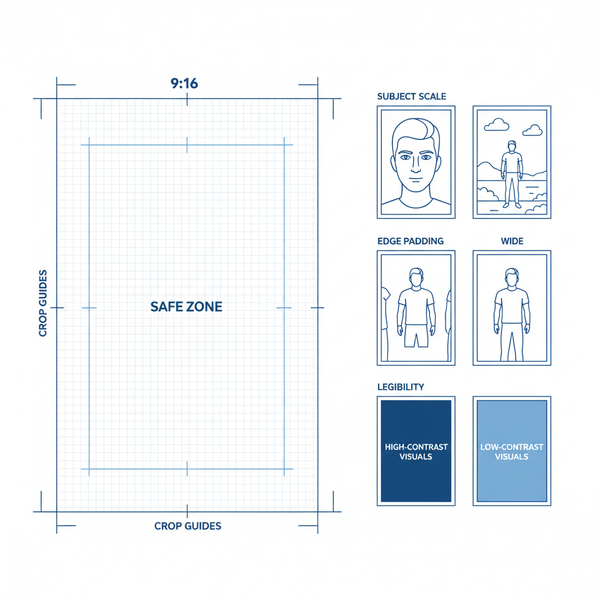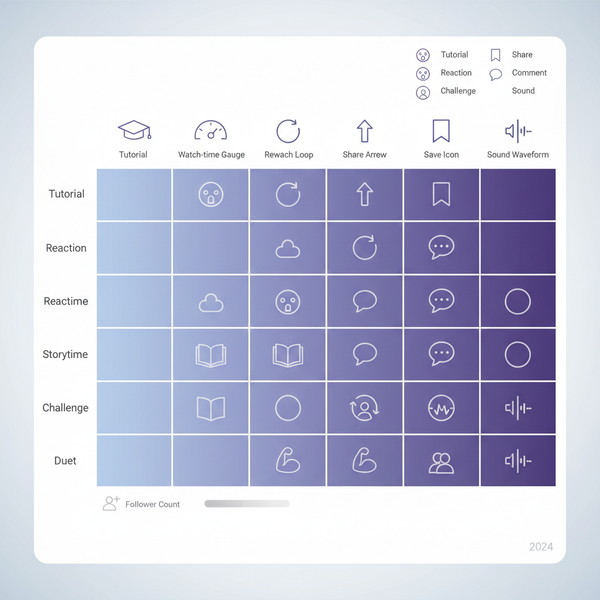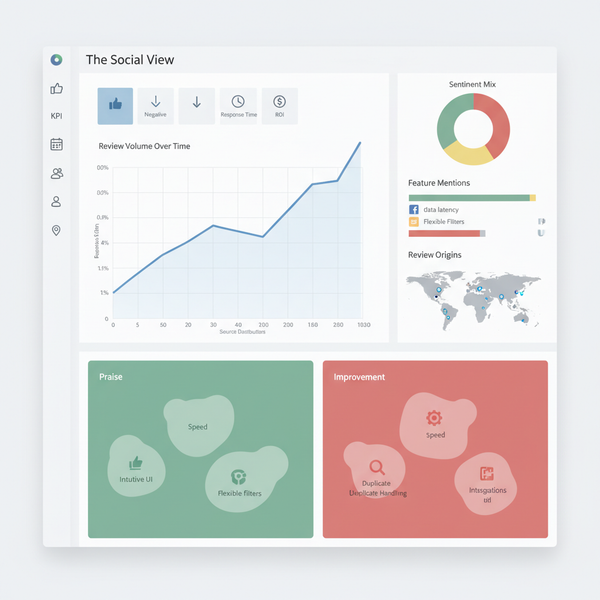TikTok Algorithm Points: How to Increase Your Video Reach
Learn how TikTok algorithm points work and which signals matter most, with tactics to boost watch time, completion, shares, comments, saves, and reach.
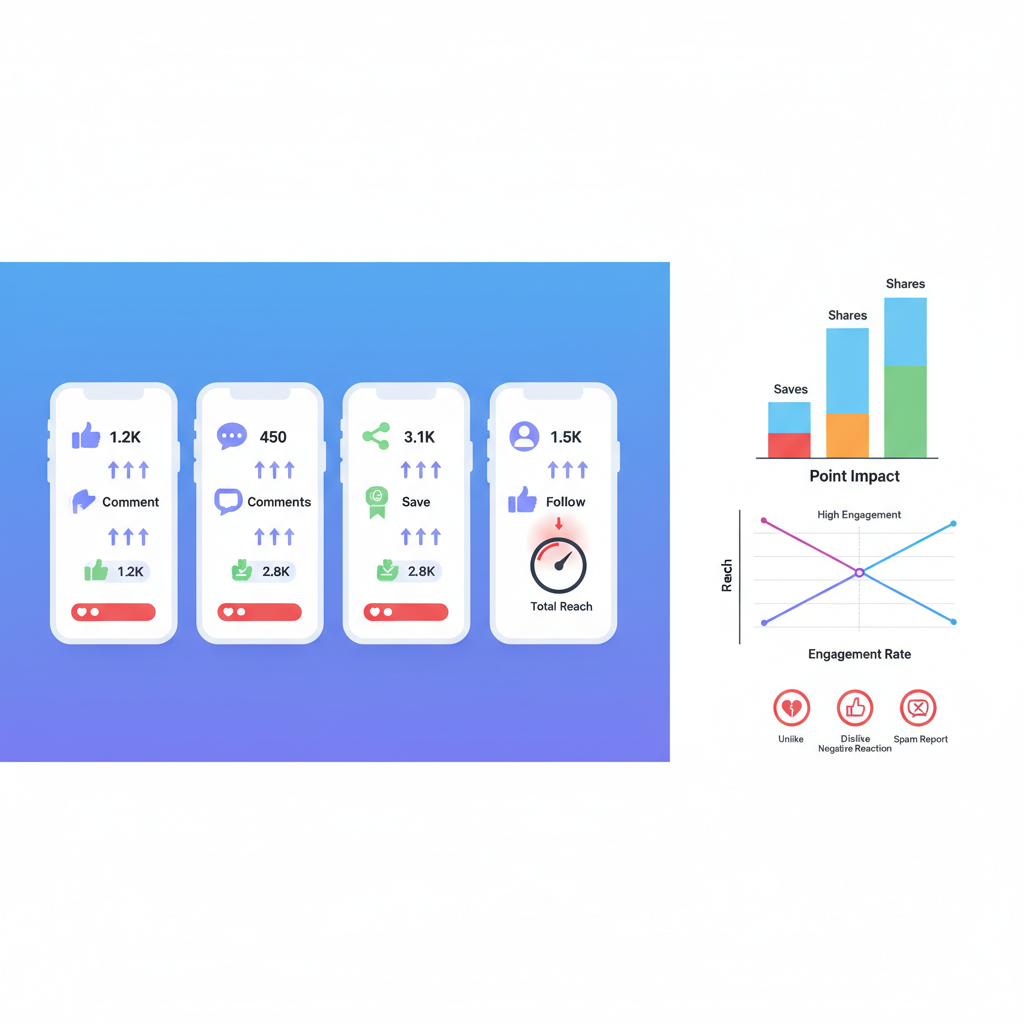
Looking to boost reach with TikTok algorithm points? This concise guide explains how TikTok weighs signals like watch time, completion rate, shares, comments, and saves—and shows you how to optimize your videos and profile so your content earns more distribution.
TikTok Algorithm Points: How to Increase Your Video Reach
If you’ve been trying to crack the For You Page, you’ve probably heard creators talk about “TikTok algorithm points.” While TikTok doesn’t officially publish a points system, the concept is a useful model for understanding how different signals—watch time, completion rate, likes, comments, shares, saves, and more—stack up to determine your video’s distribution. Think of it as a score your content earns as people interact with it. The higher the score, the more the platform shows your video to new viewers.

In this guide, you’ll learn what “TikTok algorithm points” really means, which actions add the most points, and how to optimize your videos and profile to consistently grow reach.
What Are TikTok Algorithm Points?
“TikTok algorithm points” is a creator-friendly way to describe how the platform evaluates videos during its ranking and testing phases. When you publish a video, TikTok shows it to a small initial pool of viewers. As those viewers behave—watch, rewatch, comment, share—the system assigns weight to each action. Accumulated weights act like points that increase your video’s score. High-scoring videos move to larger pools, eventually riding momentum onto more For You Pages.
Important notes:
- The points model is a heuristic, not a public TikTok spec.
- Signals are weighted differently; not all engagement is equal.
- Points accumulate over time, but the early window (first minutes to hours) often matters most.
Below is a simplified model creators use to prioritize what truly moves the needle.
| Signal | Relative Weight (Conceptual) | Why It Matters | Typical Time Window |
|---|---|---|---|
| Average Watch Time | High | Measures genuine interest; longer views imply quality. | Immediate and ongoing |
| Completion Rate | High | Finishing the video signals strong relevance and retention. | Immediate |
| Shares | High | Pushes content to new audiences; indicates strong value. | Early spike boosts distribution |
| Comments | Medium–High | Shows conversation and emotional response. | Early and ongoing |
| Likes | Medium | Lightweight signal of approval; helps but less than shares/comments. | Immediate |
| Favorites (Saves) | Medium–High | Indicates utility or repeat value; boosts long-tail reach. | Ongoing |
| Rewatches | High | Looping and replays amplify watch time; signals high engagement. | Immediate |
| Profile Click-through | Medium | Shows broader interest in the creator; strengthens account-level trust. | Early |
Watch Time and Completion Rate: How They Add Points
Key definitions
Two of the strongest drivers of TikTok algorithm points are average watch time and completion rate. They measure whether viewers stay engaged:
- Average watch time: The mean number of seconds people watch your video.
- Completion rate: The percentage of viewers who watch to the end.
Why this matters
- If your 30-second video averages 24 seconds viewed and 65% completion, it’s signaling high relevance.
- Shorter videos often yield higher completion rates, but your goal is maximizing watch time relative to length. For 7–15 seconds, aim for near-full completion.
Tips to lift watch time
- Start with a hook in the first 1–2 seconds.
- Keep pacing tight; cut filler.
- Use pattern interrupts: small changes in angle, zoom, or on-screen text every 2–4 seconds.
- Consider loops (end ties back to the beginning) to encourage rewatches.
- Add captions/subtitles to aid comprehension and retention.
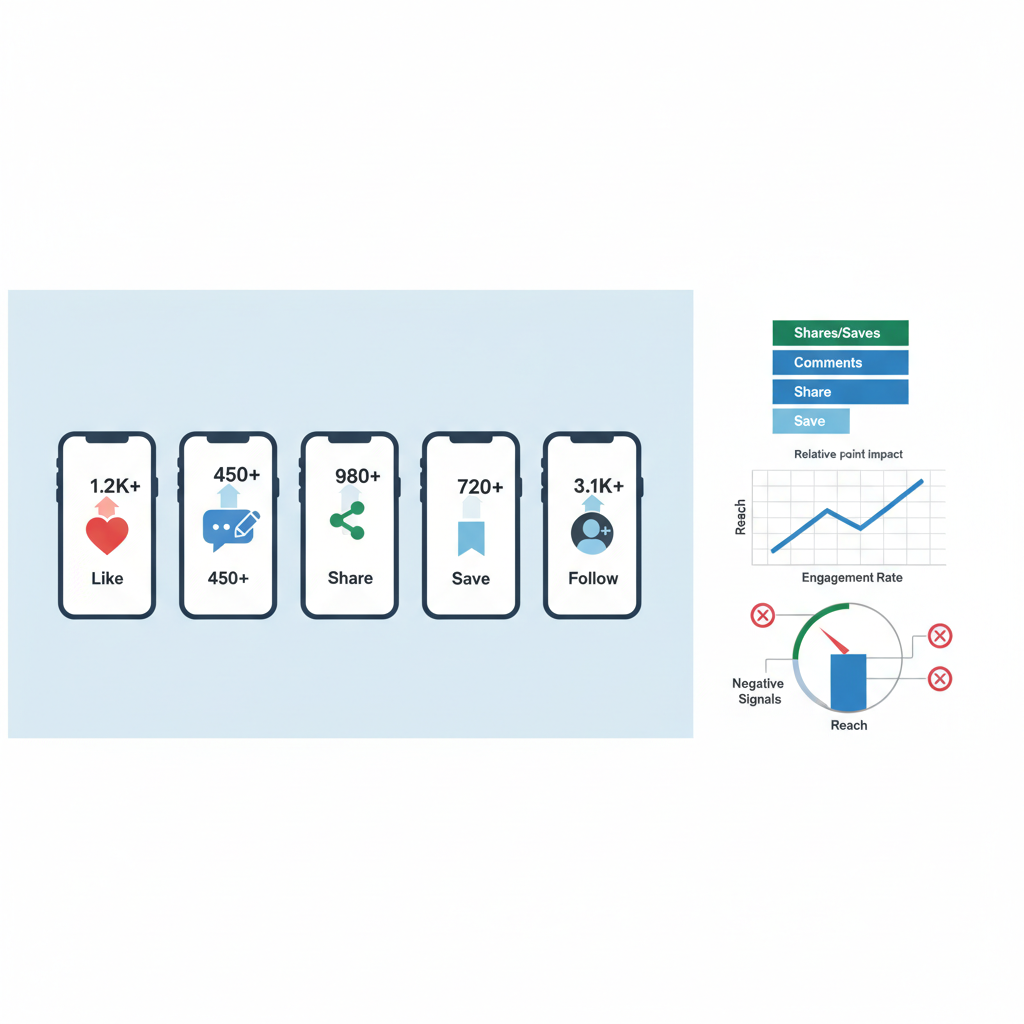
Hook template examples
- “You’re doing X wrong—here’s the 10-second fix.”
- “Watch me turn [problem] into [result]…”
- “If you struggle with [pain point], try this.”
Engagement Metrics: Likes, Comments, Shares, Saves, and Follows
How each engagement affects points
Engagement actions contribute points with different weights. Shares and comments generally carry more weight than likes because they indicate stronger intent.
- Shares: High-value signal; each share pushes your video to a new micro-audience. Encourage with “send this to a friend who…”
- Comments: Medium–high; promote conversation with prompts (“What would you try next?”).
- Likes: Medium; still meaningful but lighter weight—don’t rely solely on likes.
- Saves (Favorites): Medium–high; a strong sign your video is useful or inspiring. Tutorials, recipes, and “insider” tips tend to drive saves.
- Follows after viewing: Shows creator-level affinity; helps your account health and future distribution.
Effective ways to drive engagement
- Ask one clear question at the end.
- Add a micro-controversy (light debate, not misinformation).
- Request duets/stitches for participatory content.
Posting Frequency and Consistency: How They Influence Points
Posting frequency doesn’t directly add points to a specific video, but consistency affects your account-level trust, which can indirectly increase distribution. TikTok tends to reward accounts that:
- Post consistently so the system can learn your content type and audience.
- Maintain quality: high retention ratios and clean audio/video.
- Avoid spammy behavior: mass posting low-quality clips in a short window can hurt.
Recommended cadence:
- 3–5 posts per week for most creators; daily if you can maintain quality.
- Batch record; schedule publishing for your audience’s active hours.
- Review performance weekly; iterate based on the top 3 performing formats.
Profile Quality: Bio, Niche Clarity, and Account Health
A well-optimized profile can improve how TikTok categorizes your content, helping it find the right viewers faster. That can boost initial relevancy points.
Profile optimization checklist
- Clear niche in your bio: “[Topic] tips daily | [Outcome] in 30 seconds.”
- Include keywords that match your content’s themes (e.g., “digital marketing,” “meal prep,” “home workouts”).
- Use a consistent username and profile photo that align with your niche.
- Link other social profiles or a website to establish creator credibility.
- Consider enabling “Category” features and business tools if relevant to your niche.
Strong profile signals help the algorithm pre-select a better initial test audience, improving early engagement chances.
Content Relevance and Trending Sounds
TikTok evaluates topical relevance from your captions, on-screen text, spoken words, and audio tracks. Trending sounds can boost exposure when used thoughtfully.
- Trending sounds: Pair them with relevant content; don’t shoehorn just for trend-chasing.
- On-screen text: Put your main keyword and promise within the first 2–3 seconds.
- Spoken keywords: TikTok’s ASR (automatic speech recognition) can detect topics; speaking your keywords helps search distribution.
- Visual context: Footage that matches the topic (e.g., an Excel screen for spreadsheet tips) reinforces relevance.
Avoid overusing irrelevant trends. The strongest point gains come from alignment: right topic, right audience, right format.
Audience Interaction Patterns: Early Engagement Spike
Early engagement velocity (first 30–90 minutes) often determines whether your video graduates to larger pools. An initial surge of watch time, shares, and comments can significantly lift points.
Practical ways to boost early spikes
- Post when your audience is active; use TikTok analytics to find peak hours.
- Seed engagement: share to your close friends or community within minutes of posting.
- Pin top comments or add your own comment to start the thread early.
- Cross-promote to other platforms and newsletter communities quickly after posting.
Tips to Maximize Points: Hooks, Captions, and CTAs
Treat the first two seconds like a thumbnail. Everything else supports retention and engagement.
Hooks
- Visual hook: start mid-action, zoom in, switch angles.
- Curiosity gap: “Most people miss this…”
- Clear benefit: “Save hours with this shortcut.”
Captions
- Place the main value proposition up front.
- Include 1–2 primary keywords.
- Add one actionable prompt.
CTAs
- “Save this for later.”
- “Comment ‘template’ and I’ll DM you a free checklist.”
- “Tag a friend who needs this.”
Script skeleton to structure your video
[0–2s] Hook: State the problem or payoff fast.
[2–6s] Context: Show the setup; keep cuts tight.
[6–15s] Value: Demonstrate the tip/step; add on-screen text keywords.
[15–25s] Payoff: Show final result or summary.
[25–30s] CTA: Ask for a comment/share/save; tease the next post.Hashtags and SEO Keywords in TikTok’s Distribution Logic
Best practices
TikTok has matured into a search platform. Including the right keywords and hashtags helps your video get indexed and shown to users searching topics.
- Use 1–3 specific keywords in your caption (“how to clean airpods,” “beginner yoga flow”).
- Combine broad and niche hashtags: #TikTokTips + #ShortFormStrategy + #HookWriting.
- Avoid hashtag stuffing; irrelevant tags can dilute relevance and reduce points.
- Mirror keywords in on-screen text and spoken narration.
Example SEO-friendly caption and hashtag block
Caption: “TikTok hooks that boost watch time: try these 3 opener formulas.”
Keywords: TikTok algorithm points, hooks, watch time
Hashtags: #TikTokTips #CreatorGrowth #WatchTime #ContentStrategy
On-screen text (0–2s): “3 hook formulas to boost watch time”
CTA (end): “Comment ‘HOOKS’ for the template”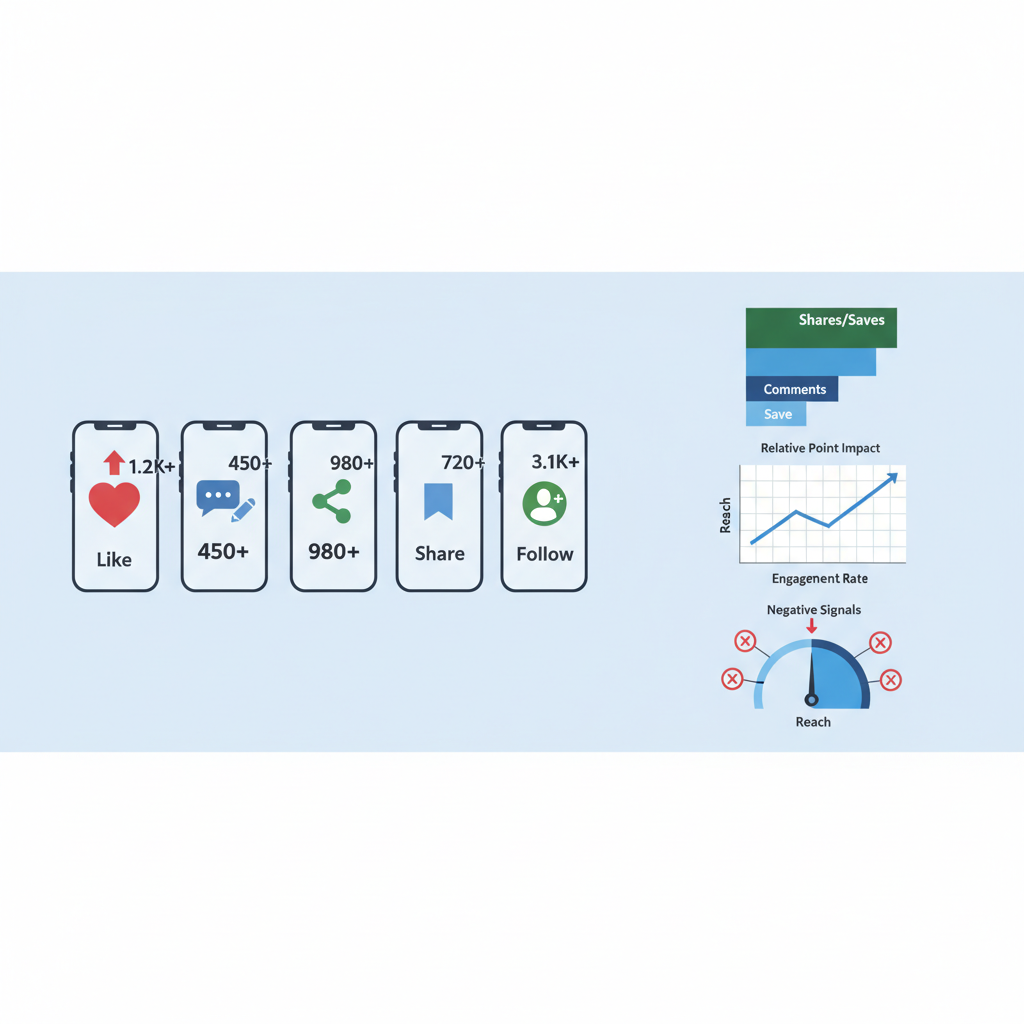
Pitfalls That Reduce Points
Steer clear of issues that lead to low retention or algorithm distrust:
- Weak hook or slow intro: viewers drop in the first 2 seconds.
- Misleading covers/thumbnails: clickbait that breaks trust hurts completion and comments.
- Overly long videos without pacing: watch time collapses.
- Low production quality: poor lighting, muffled audio reduce engagement.
- Irrelevant hashtags: confuse indexing; decrease relevancy points.
- Watermarked content from other platforms: may limit reach.
- Policy violations (copyright misuse, misinformation, unsafe content): risk suppression or removal.
- Spammy behavior: follow/unfollow churn, engagement bait outside guidelines.
Actionable Checklist to Track and Boost TikTok Algorithm Points
Use this weekly checklist to guide production and measure incremental improvements.
Planning
- Define the niche and target viewer for each video.
- Write a one-line promise/value proposition.
- Select relevant keywords; add them to caption, on-screen text, and narration.
- Choose a trending sound that fits the topic (optional).
Production
- Hook in 1–2 seconds with clear visual and verbal cues.
- Pace with quick cuts and pattern interrupts every 2–4 seconds.
- Add captions/subtitles and concise text overlays with keywords.
- Include a simple CTA to comment, share, or save.
Publishing
- Post during your audience’s peak hours (from analytics).
- Use 3–6 relevant hashtags (mix broad and niche).
- Comment first to seed discussion; pin a high-quality comment.
Post-launch
- Monitor the first 60 minutes: watch time, completion rate, shares, comments.
- Reply to comments quickly; ask follow-up questions.
- Cross-promote to other platforms for early velocity.
Iteration
- Analyze top-performing videos for hook style, length, topic, and CTA.
- A/B test different hooks, formats, and lengths.
- Keep 70–80% content within your established niche; 20–30% experiments.
Account health
- Maintain consistent posting (3–5 times/week).
- Optimize bio with niche clarity and keywords.
- Keep visuals and audio crisp; avoid watermarks and policy risks.
A Conceptual Points Model You Can Use
While the real algorithm is more complex, you can adopt a simple scoring rubric to compare videos and identify what to improve.
score =
(watch_time_ratio * 4) +
(completion_rate * 4) +
(rewatch_factor * 3) +
(shares_per_view * 3) +
(comments_per_view * 2) +
(likes_per_view * 1.5) +
(saves_per_view * 2) +
(profile_click_rate * 1.5) +
(early_velocity_multiplier)How to apply
- Track these metrics for each new post (normalize by views).
- Multiply by weights to get a comparable score.
- Identify the biggest gaps. For example, low watch_time_ratio points to hook/pacing issues; low shares suggest the value isn’t “send-worthy.”
Summary and Next Steps
To earn more TikTok algorithm points, prioritize watch time and completion, craft strong hooks, and prompt high-intent engagement like shares, comments, and saves. Align every element—caption keywords, on-screen text, spoken phrases, and visuals—to your niche for faster relevance and better indexing. Start today by A/B testing your first two seconds and adding one clear CTA per video. Want help applying this system? Save this guide and share it with a creator friend who’s ready to grow.

